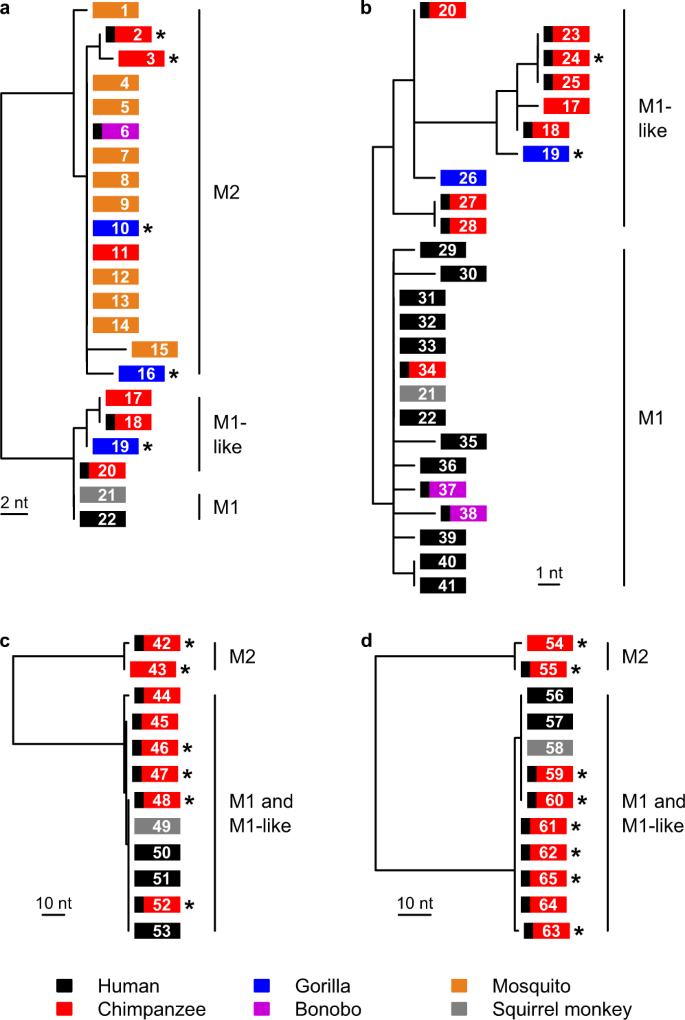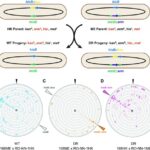ヒトとチンパンジーに感染するマラリア原虫の進化的なつながりについて、100年来の謎が解明されました。 Scientists have solved a 100-year-old mystery about the evolutionary links between malaria parasites that infect humans and chimpanzees.
2022-04-06 エディンバラ大学
・エジンバラの研究者たちは、米国ペンシルバニア大学の研究者たちと共同で、最先端の技術を用いてこの寄生虫のDNAを研究しました。結果、実際には3つの異なる種が存在することが判明した。そのうちの1種であるP. malariaeは主にヒトに感染し、他の2種は類人猿に感染する。
・類人猿に感染する2種のうちの1種は、中央・西アフリカのチンパンジー、ゴリラ、ボノボに寄生していることが判明した。もう一方の猿の寄生虫は、ヒトに感染する寄生虫ともっと近い関係にある。研究者は、2つの種の遺伝的多様性を詳細に比較することが可能になった。
・その結果、ヒトのマラリア原虫は遺伝的ボトルネックを経験し、一時的に個体数が減少し、遺伝的変異のほとんどが失われていることが判明した。この原因として、P. malariaeはもともと猿に寄生していたが、少数の寄生虫が宿主を変えてヒトに感染し始めたことが考えられると、研究チームは述べている。
・この研究は『Nature Communications』誌に掲載され、米国立衛生研究所の資金提供を受けている。
<関連情報>
- https://www.ed.ac.uk/news/2022/malaria-parasite-puzzle-solved-as-ape-origin-found
- https://www.nature.com/articles/s41467-022-29306-4
ヒトマラリア原虫Plasmodium malariaeのアフリカ類人猿からの人獣共通感染症の起源 Zoonotic origin of the human malaria parasite Plasmodium malariae from African apes
Lindsey J. Plenderleith,Weimin Liu,Yingying Li,Dorothy E. Loy,Ewan Mollison,Jesse Connell,Ahidjo Ayouba,Amandine Esteban,Martine Peeters,Crickette M. Sanz,David B. Morgan,Nathan D. Wolfe,Markus Ulrich,Andreas Sachse,Sébastien Calvignac-Spencer,Fabian H. Leendertz,George M. Shaw,Beatrice H. Hahn &Paul M. Sharp
NatureCommunications Published: 06 April 2022

Abstract
The human parasite Plasmodium malariae has relatives infecting African apes (Plasmodium rodhaini) and New World monkeys (Plasmodium brasilianum), but its origins remain unknown. Using a novel approach to characterise P. malariae-related sequences in wild and captive African apes, we found that this group comprises three distinct lineages, one of which represents a previously unknown, highly divergent species infecting chimpanzees, bonobos and gorillas across central Africa. A second ape-derived lineage is much more closely related to the third, human-infective lineage P. malariae, but exhibits little evidence of genetic exchange with it, and so likely represents a separate species. Moreover, the levels and nature of genetic polymorphisms in P. malariae indicate that it resulted from the zoonotic transmission of an African ape parasite, reminiscent of the origin of P. falciparum. In contrast, P. brasilianum falls within the radiation of human P. malariae, and thus reflects a recent anthroponosis.


